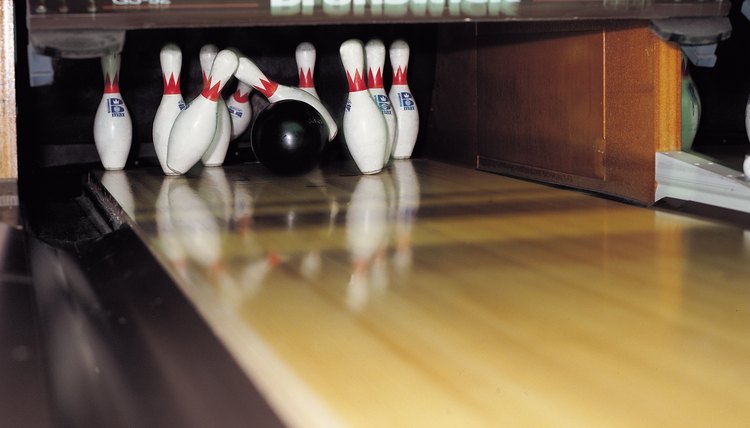The Best Way to Get Your Bowling Ball to Hook on Heavy Oil

Bowling lane conditions vary by establishment. These variations are dictated by the makeup of the bowling lanes (wood or synthetic) and the bowling center's choice of oiling patterns -- there are as many as 10 different options available as dictated by the U.S. Bowling Congress and the Professional Bowlers Association. Although the best way to prepare for heavy oil conditions is to have several bowling balls handy, including one that is designed for use on heavy oil, that may not always be an option. In that case, there are techniques for trying to get your bowling ball to hook properly.
Talk to the bowling pro at the center to find out what type of oiling pattern the establishment uses. Discuss what type of bowling balls grip best in that pattern. Balls made of polyurethane tend to have the most grip on oily conditions. However, they can overhook on dry conditions, depending on the severity of your hook.
Alter your shot. Make some practice throws during warm-up, and determine where your ball begins to break. Change your approach to the pins to a more diagonal angle. For example, if you are right-handed, move a couple of boards to the right and slow the speed of your throw- down by a couple of miles per hour. Adjust accordingly, because the lanes will dry out and the ball will begin to grip better as you play longer.
Lightly scuff your ball with fine-grit sandpaper. Lightly swirl scratches into the surface of the ball to give it more grip as it moves down the lane, without causing permanent damage to the ball. Remove the scratches later by having the ball professionally polished.
Consider altering your release as a last option. Change your release point to allow for less hook to be created. For example, for a right-handed bowler whose normal release has his thumb pointing at the "9 o'clock" position (if you were looking at a clock), adjust the release so that your thumb stops at the "11 o'clock" position. This will still give you a hook, but one that is less pronounced. Change back to your normal release point as the conditions begin to dry.
References
Writer Bio
Based in Virginia Beach, Mark S. Baker has been working in editorial for more than 20 years. He has served as a writer and editor for publications such as the "Houston Post," "Boca Raton News" and "Interactive Week," among others. Baker also has a culinary arts degree from Johnson & Wales University and has his own catering business.
